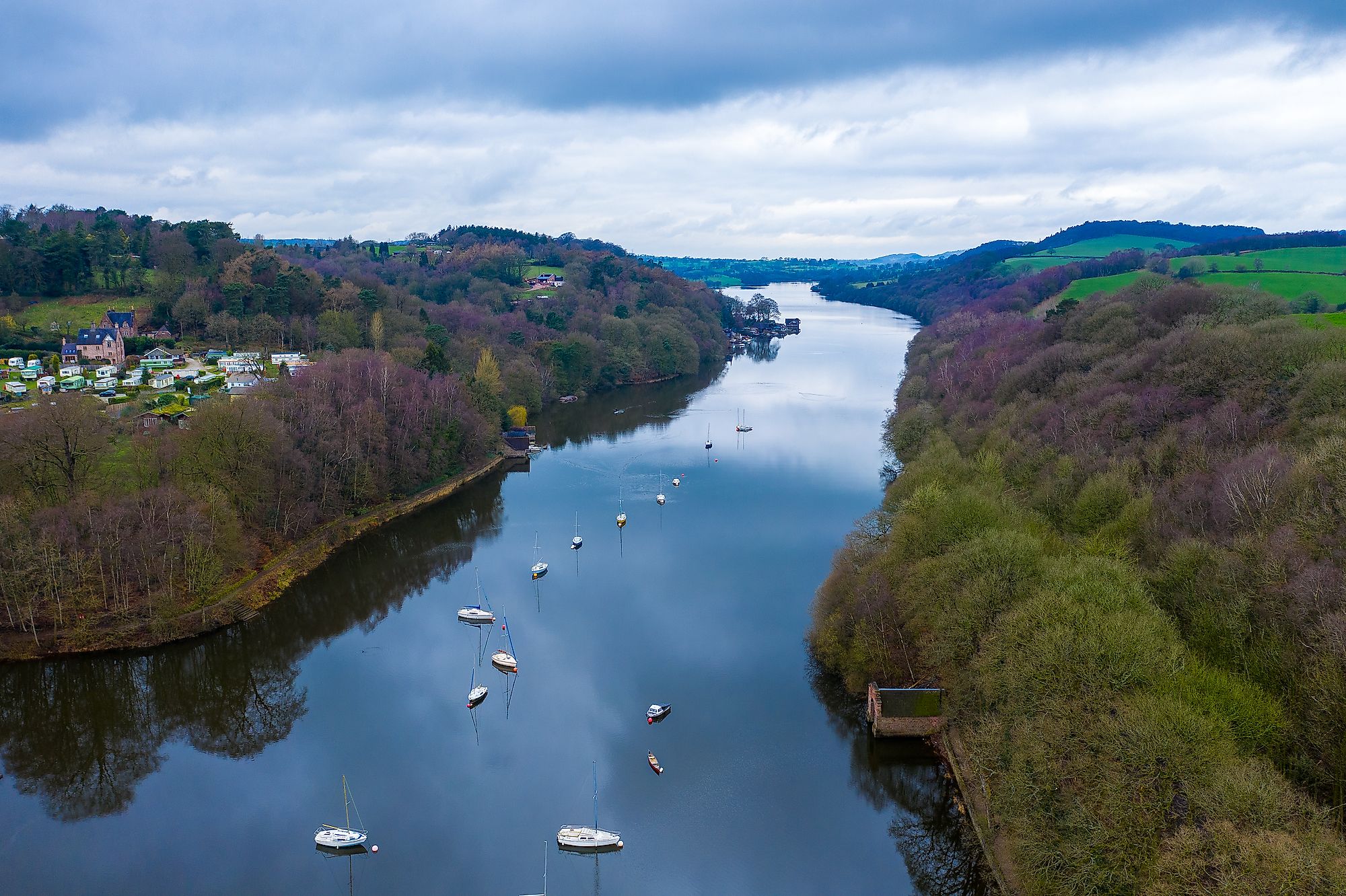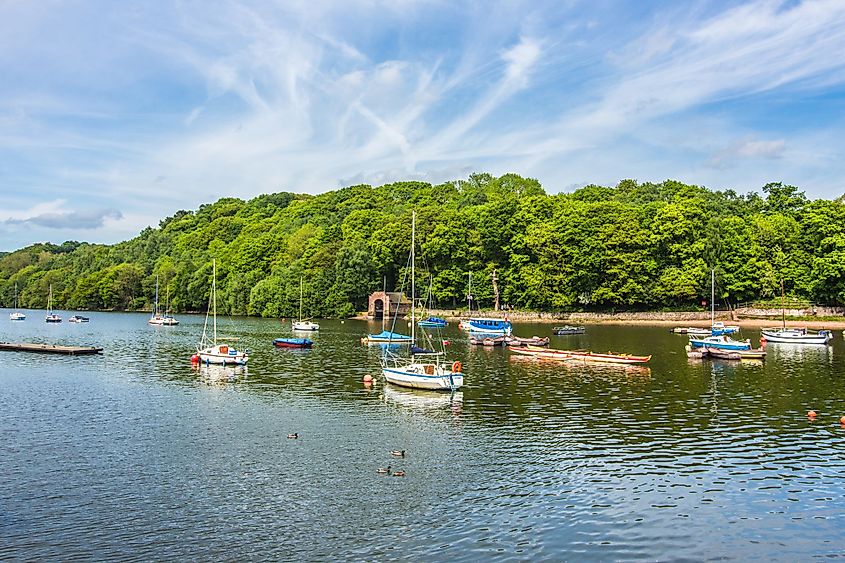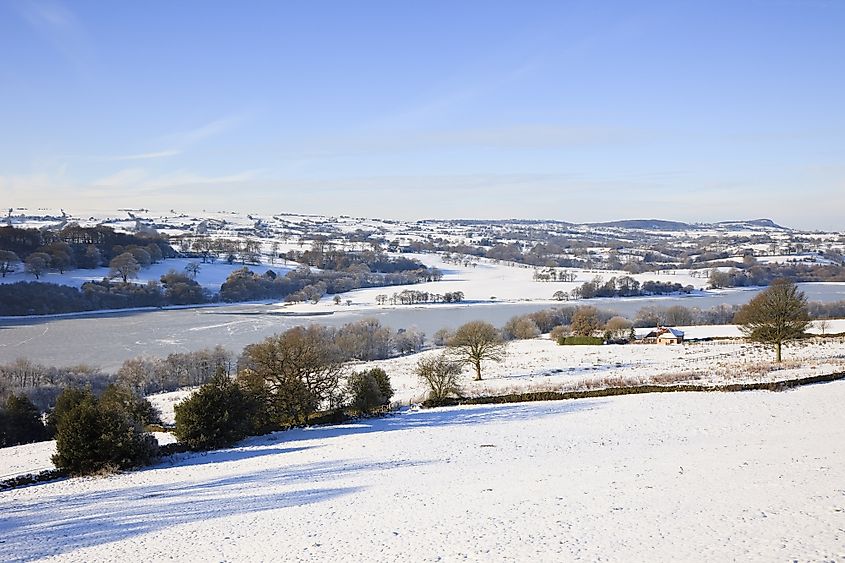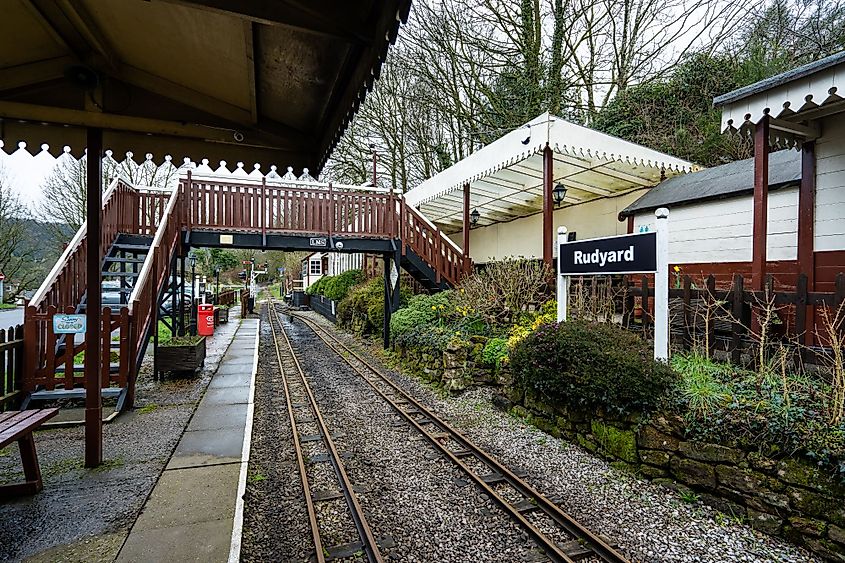
Rudyard Lake, Staffordshire
Rudyard Lake is a reservoir located in the lakeside village of Rudyard, to the northwest of the market town of Leek in Staffordshire County in England. The Lake was built in 1797-98 by the Scottish civil engineer John Rennie, as a feeder reservoir to provide water for the Caldon Canal. The Rudyard Lake is considered the largest straight-stretch of water outside the Lake District in England.
Geography

The Rudyard Lake is approximately 3.2km in length and has a width of about 0.40km. The lake covers an area of 664,000 sq.m and has a water volume of 2,950,000 m3. The Rudyard Lake was formed by constructing a 19m earthen dam at the southern end of a steep wooded valley. To prevent erosion, the dam was covered with stone on the upstream side. At the dam’s eastern side, an 18m wide spillway was built, which feeds the 4km long feeder that carries water to the Leek Branch. A feeder which carries water from the headwaters of River Dane provides the main source of water to Rudyard Lake. The lake feeds the Caldon Canal by the Rudyard Lake feeder stream. The Lake is managed by the Canal & River Trust.
Attractions

The Rudyard Lake provides critical habitat for many birds like herons, Grebes, coots, etc. Flocks of various species of ducks along with wading birds are also found in the lake. The old trees in the northern end of the lake serve as important insect habitats. Besides birdwatching, the lake offers many recreational activities like fishing, canoeing, boating, steam train trips, walking, etc. for its visitors. The Lake is home to the North Staffordshire Rowing Club and the Rudyard Lake Sailing Club. It is estimated that more than 500,000 visitors come to visit Rudyard Lake every year.
Brief History
The construction of the Rudyard Lake/reservoir began in 1797 when an Act of Parliament authorized the construction of a 3.2km long reservoir, just to the north of the Leek Town in the Moorlands of Staffordshire County. The main purpose of the reservoir was to provide water for the growing system of canals that formed the vital routes for the Industrial Revolution in the Midlands.

On June 26, 1846, the British Railway Company – the North Staffordshire Railway, took over the Trent and Mersey Canal Company as well as the lake and began the construction of the North Staffordshire Railway. The Railway Company laid a track on one side of the lake as a part of the route for the Churnet Valley Line that ran between Macclesfield and Uttoxeter. A station was built at each end of the lake, one at the Rudyard village and the other one at the lake’s northern end named Rudyard Lake. The station at Rudyard village was named Rudyard Lake and the Rudyard Lake Station was renamed as Cliffe Park. During the 19th century, the Rudyard Lake became a popular tourist destination attracting several tourists and day-trippers, who easily accessed the lake using the newly built North Staffordshire Railway.
According to a legend, the Rudyard village was named in the honor of Ralph Rudyard who is believed to have killed Richard III, the King of England at the Battle of Bosworth. The banks of the Rudyard Lake served as the meeting place of the couple John Lockwood Kipling and Alice Macdonald. It is believed that the couple loved the scenic lake and named their first-born son ‘Rudyard’ after the lake. Their son Rudyard Kipling eventually went on to become one of the greatest English writers. The lake also served as the place where Matthew Webb, who was the first person to swim across the English Channel, came to demonstrate his swimming skills in the lake; and also, the famous “African Blondin” who entertained the crowds by walking over a tightrope across the lake. This extremely popular tourist destination was also referred to as the “Blackpool of the Potteries”.










